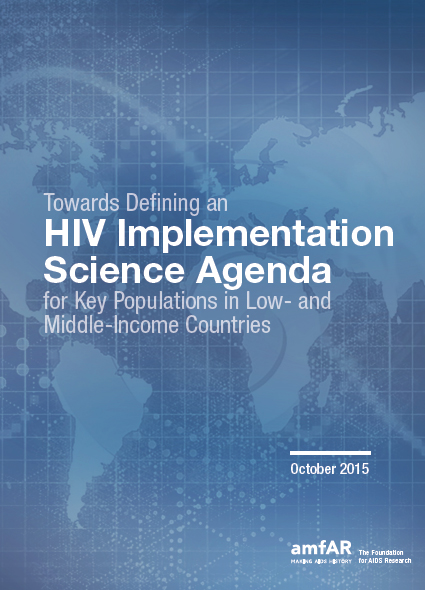Plugging the Implementation Gaps
Since their peak in the early 2000s, AIDS-related deaths have declined by more than 40% and new HIV infections by 35% globally, sparking optimism that we now have the tools to end AIDS as a serious pandemic within the next generation. However, many of the key populations most affected by HIV—men who have sex with men, people who inject drugs, sex workers, and transgender individuals—are not receiving the full benefit of these advances, and, as a result, members of key populations and their sex partners accounted for 40–50% of new HIV infections in 2014. Without more research into how the global HIV response can better reach these populations and address their prevention and treatment needs, we will never end AIDS.
Implementation science seeks to understand the causes of such implementation gaps and identify effective strategies for closing them; however, in the past, this approach has often been neglected in the realm of HIV. In May 2015, amfAR hosted an expert consultation that sought to define an HIV implementation science agenda for key populations in low- and middle-income countries. The report Towards Defining an HIV Implementation Science Agenda for Key Populations in Low- and Middle-Income Countries describes the strategies and priorities addressed during the consultation and makes a case for prioritizing implementation science in the global HIV response.
The report is available for download here.
